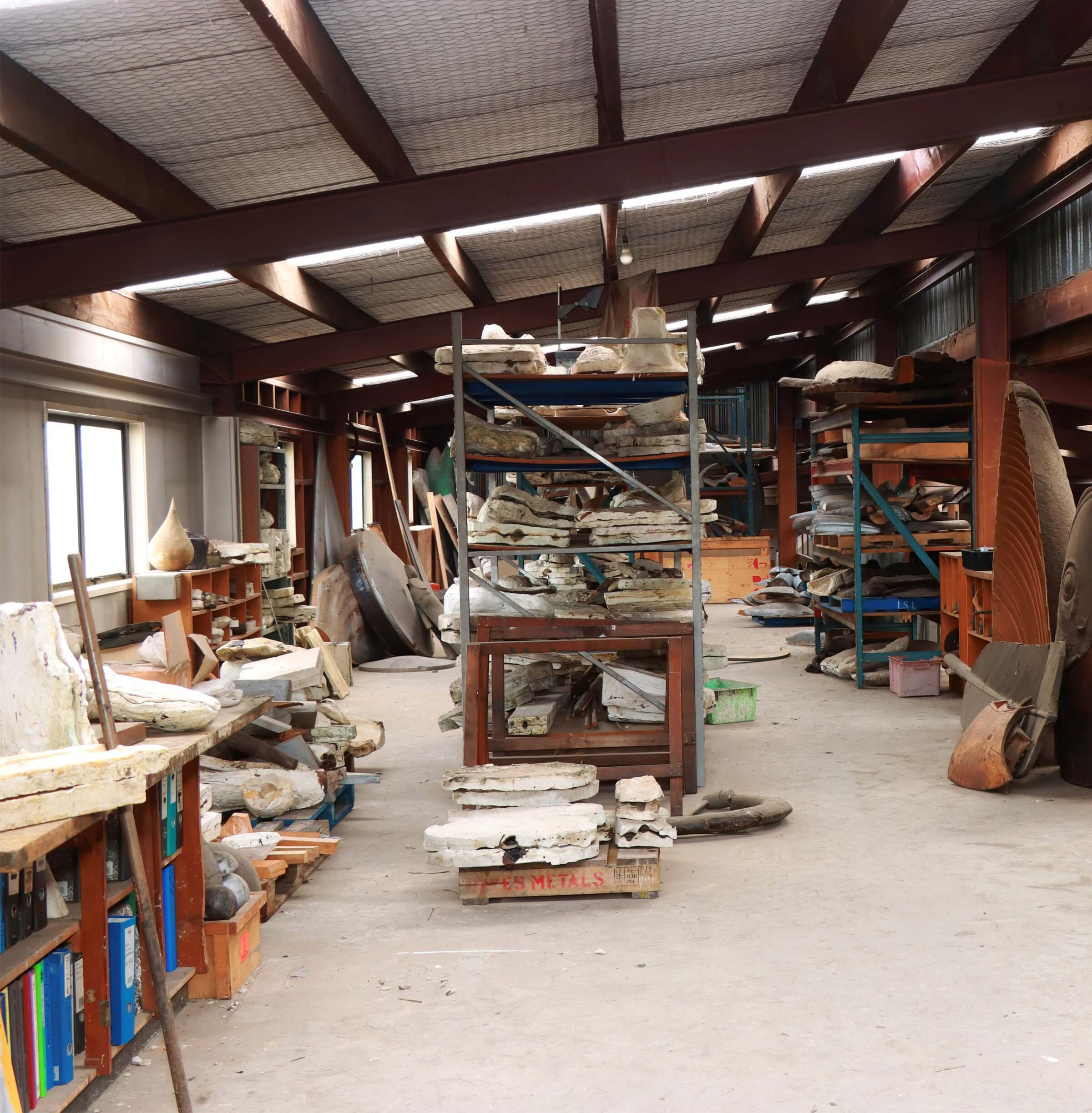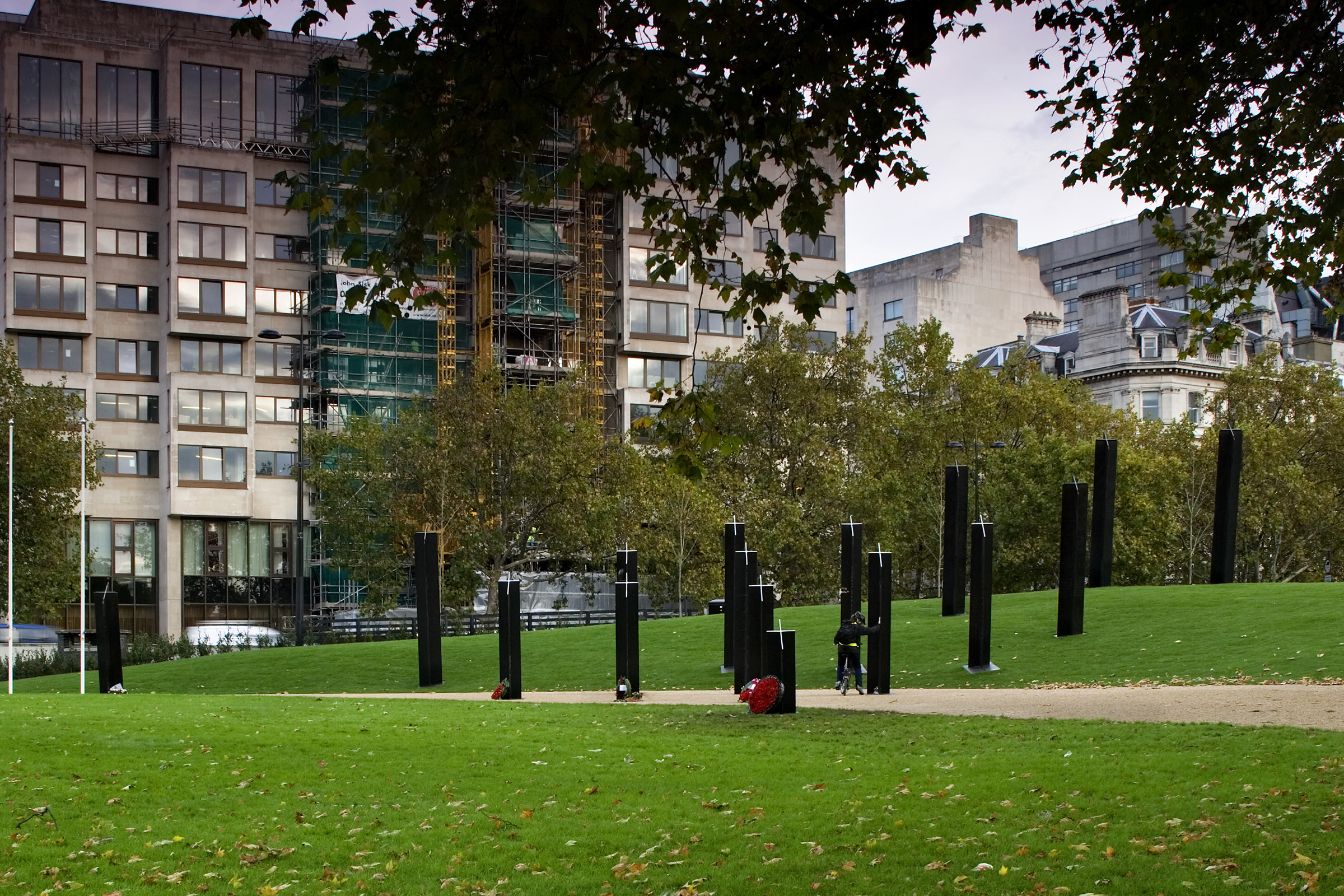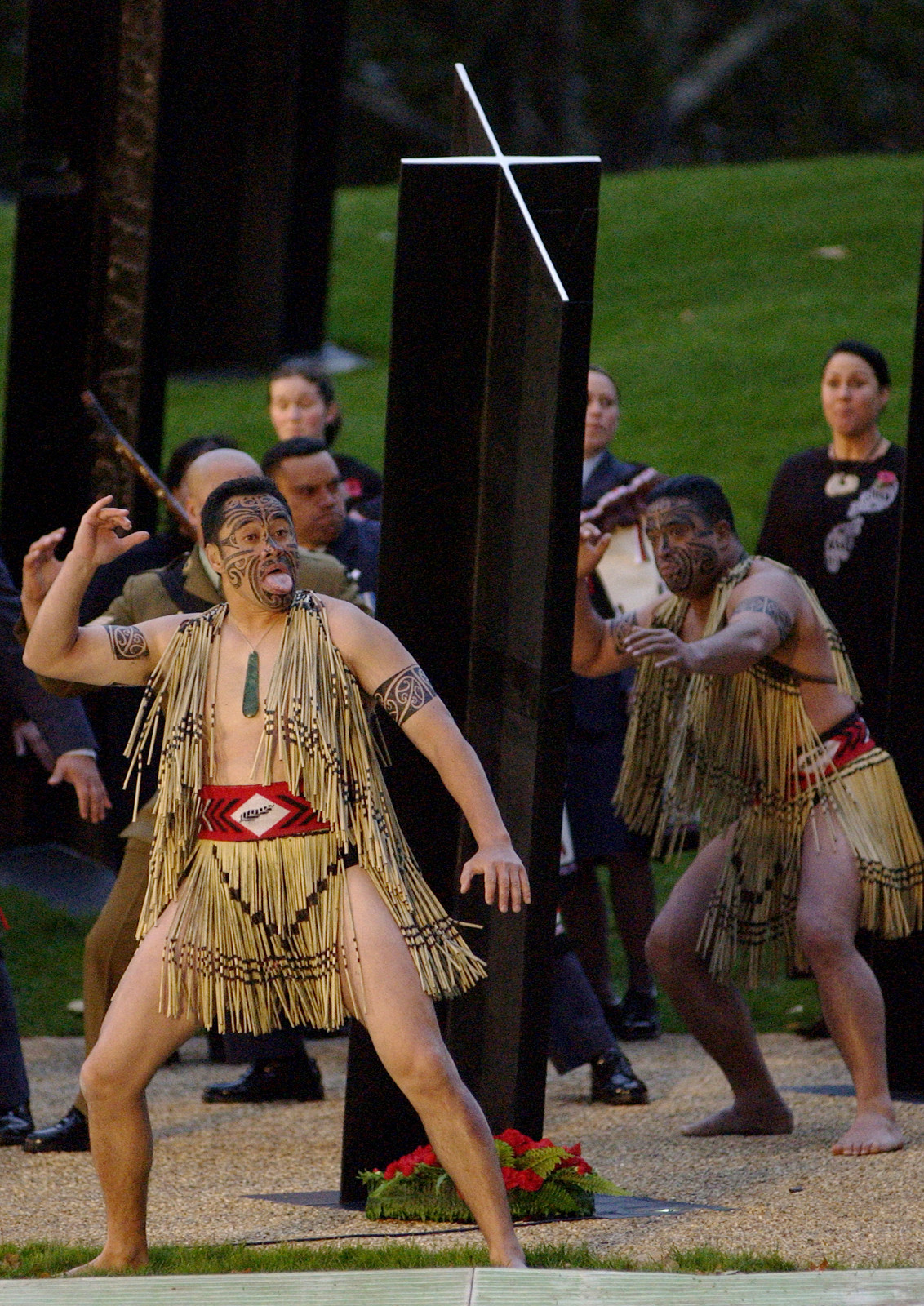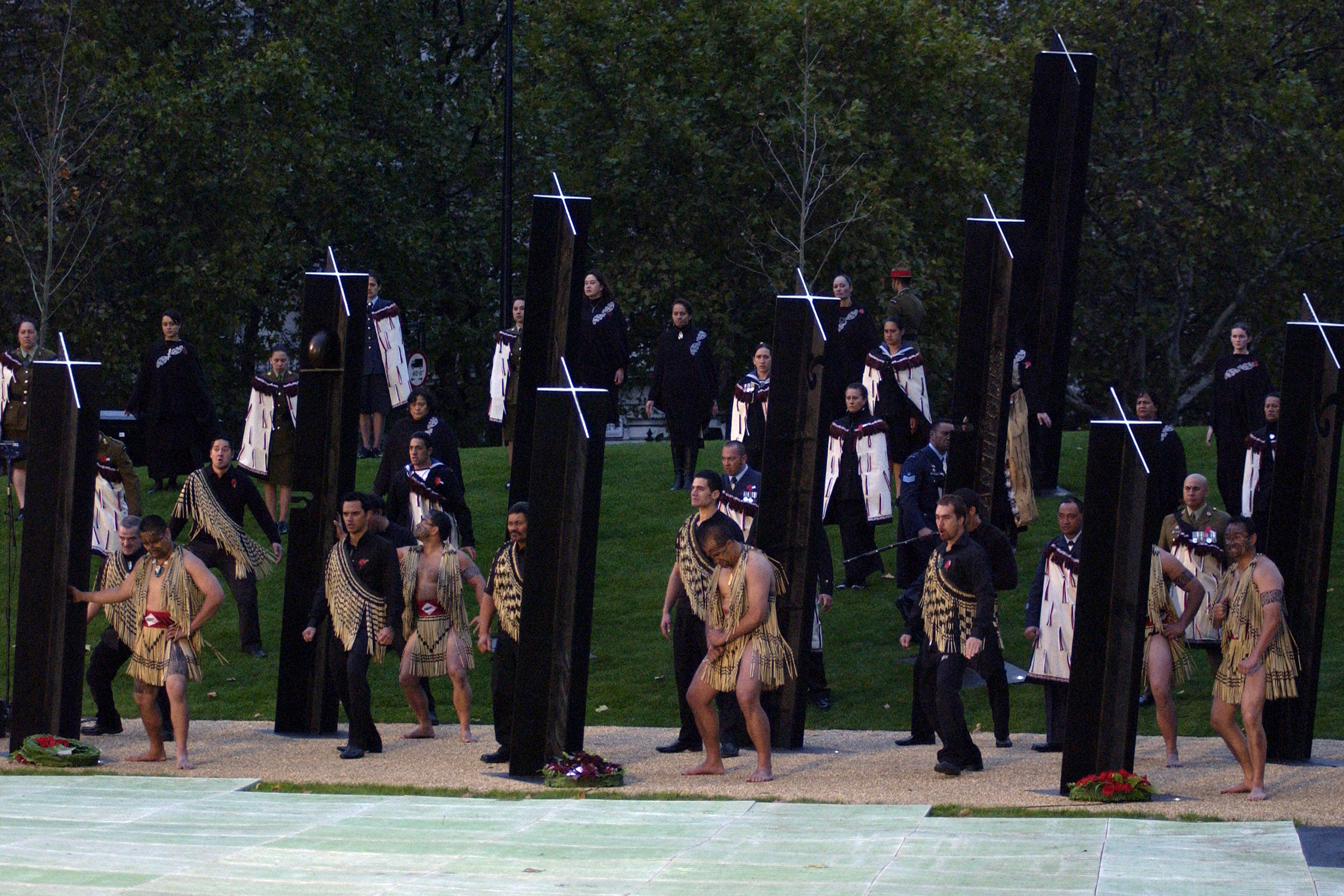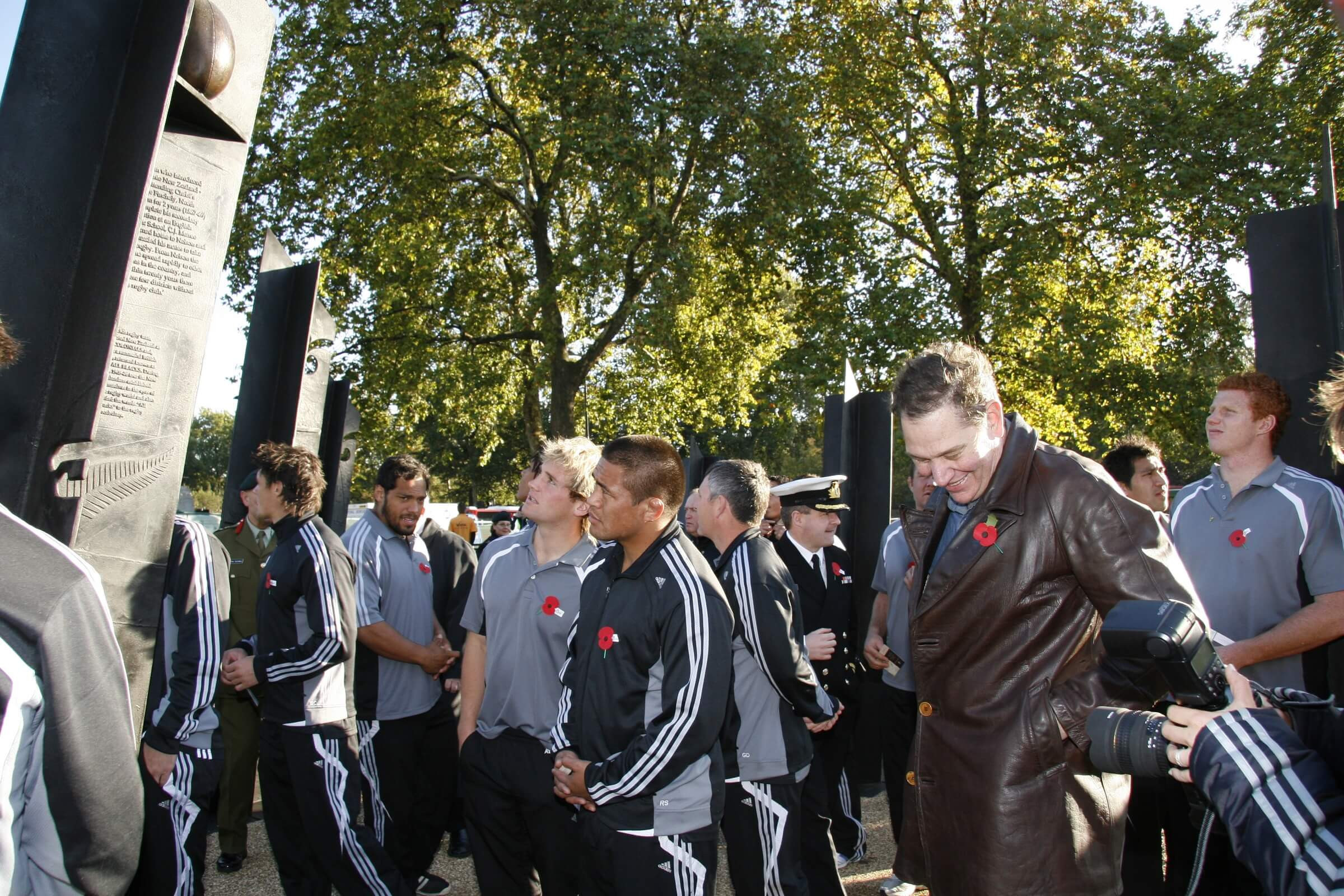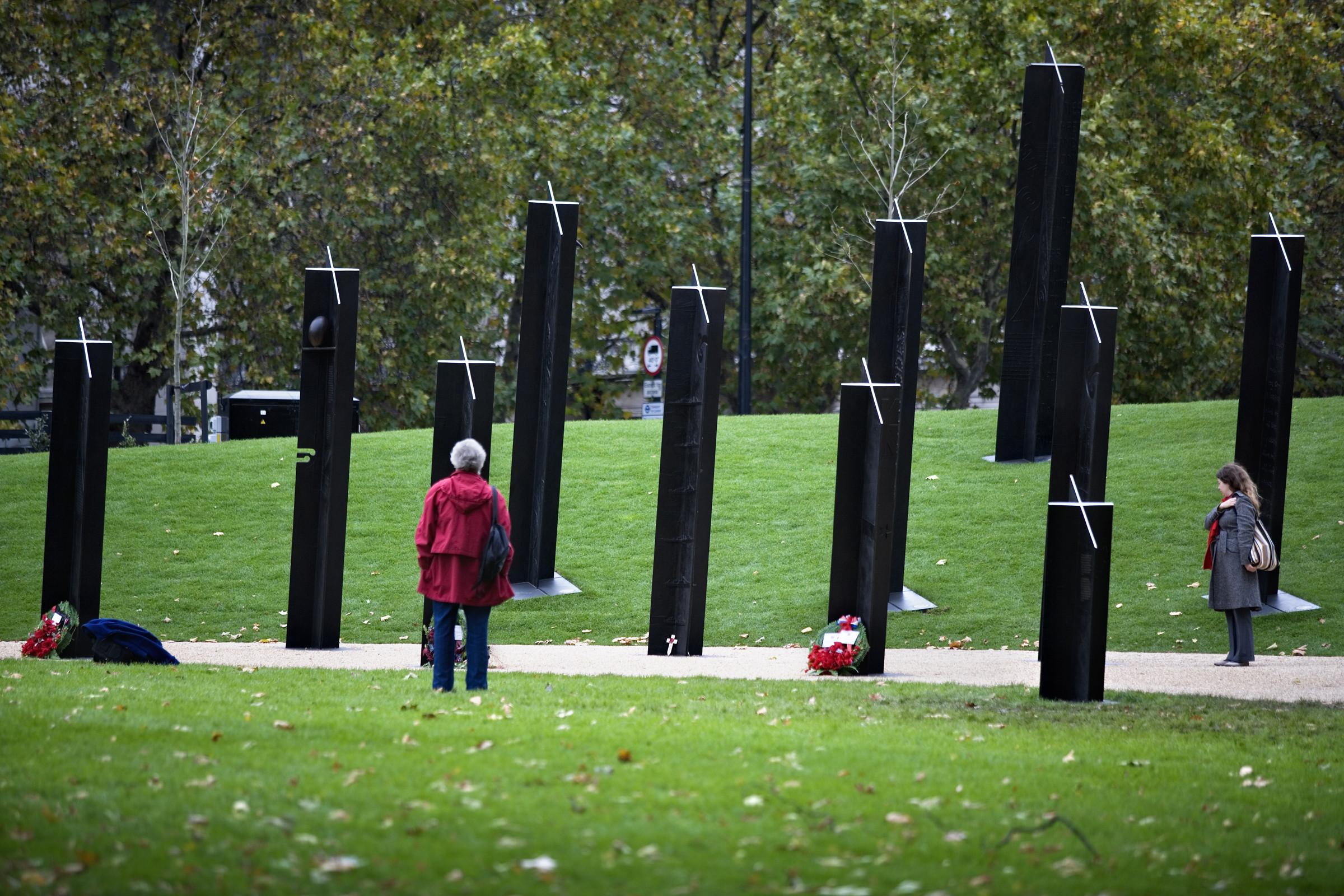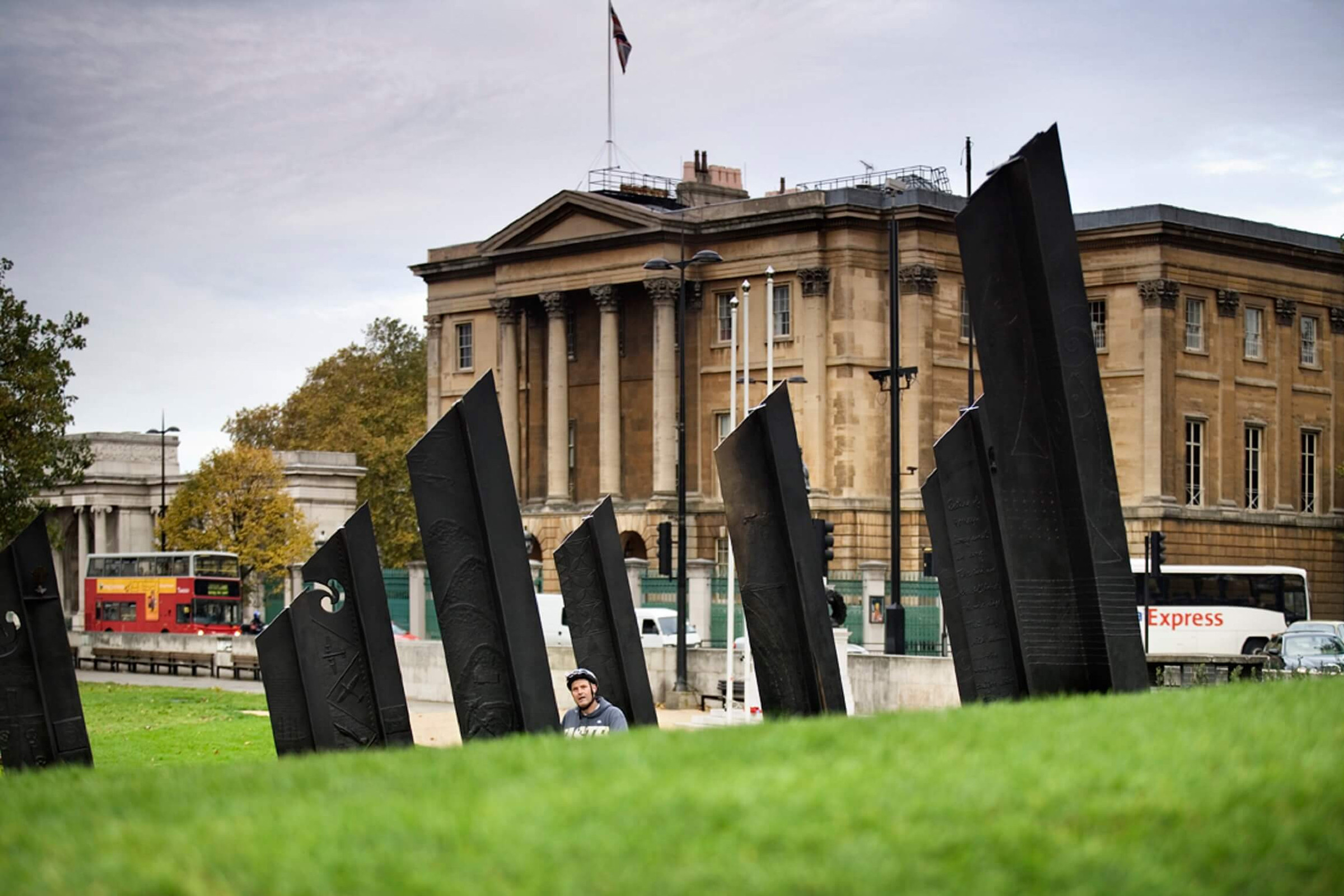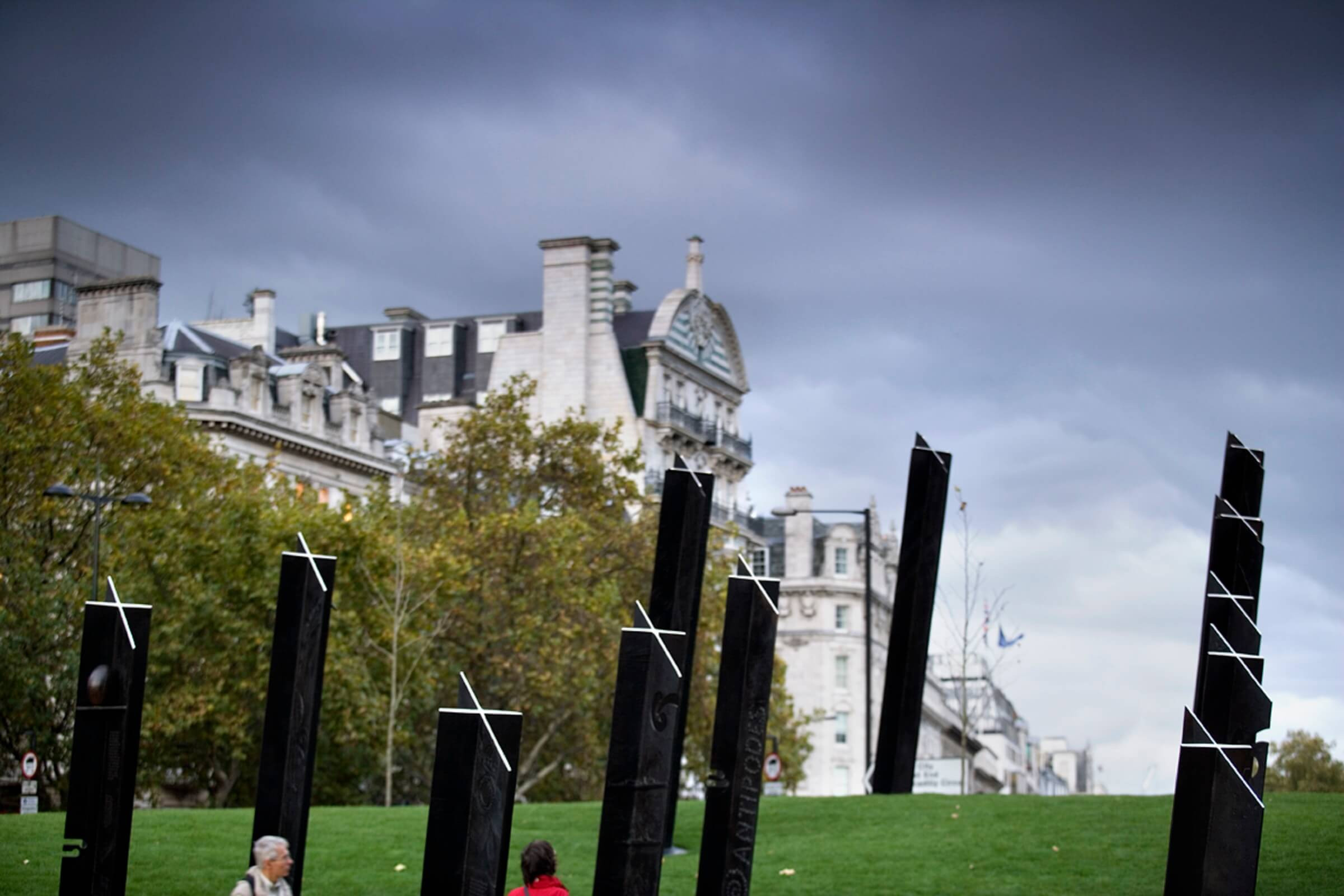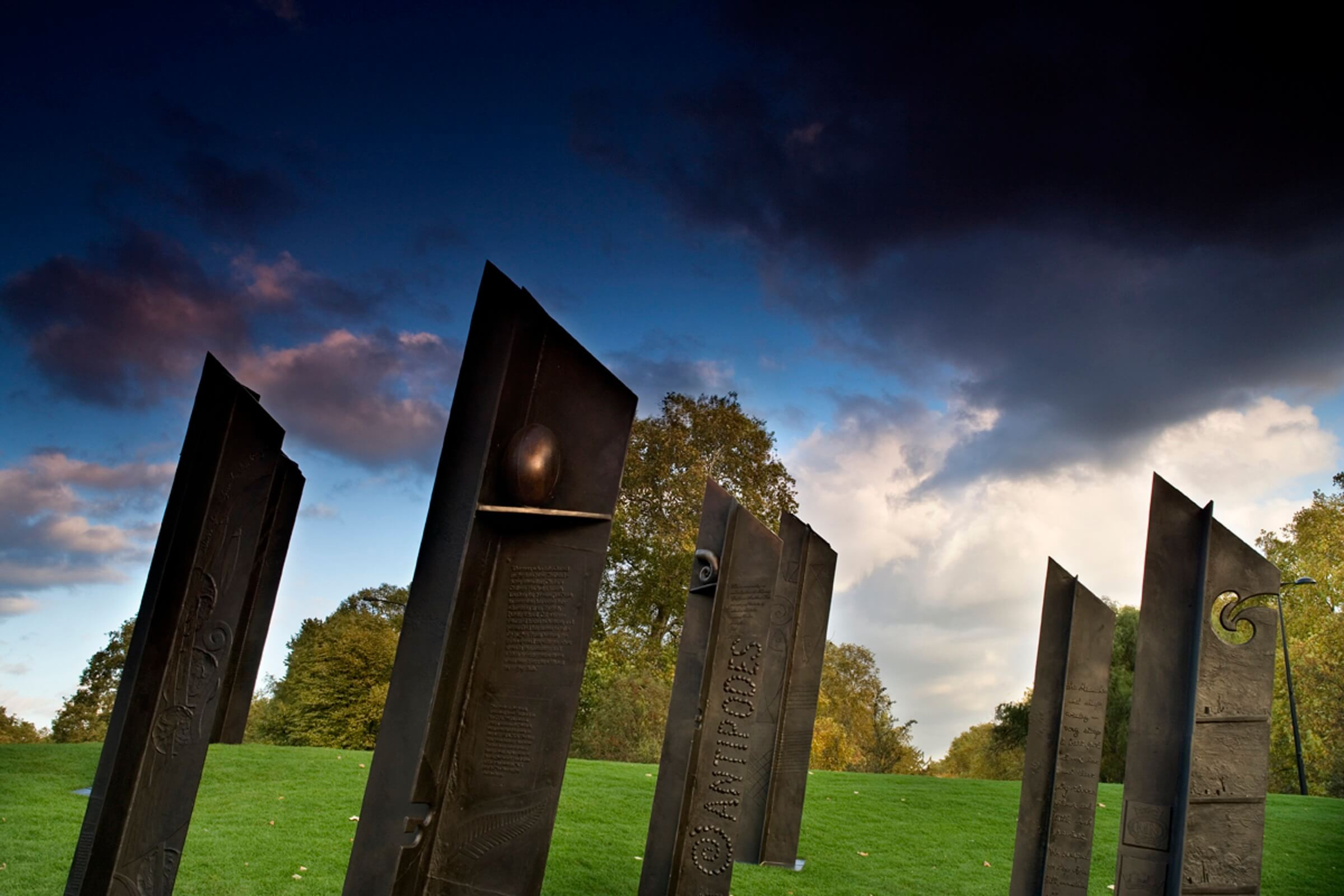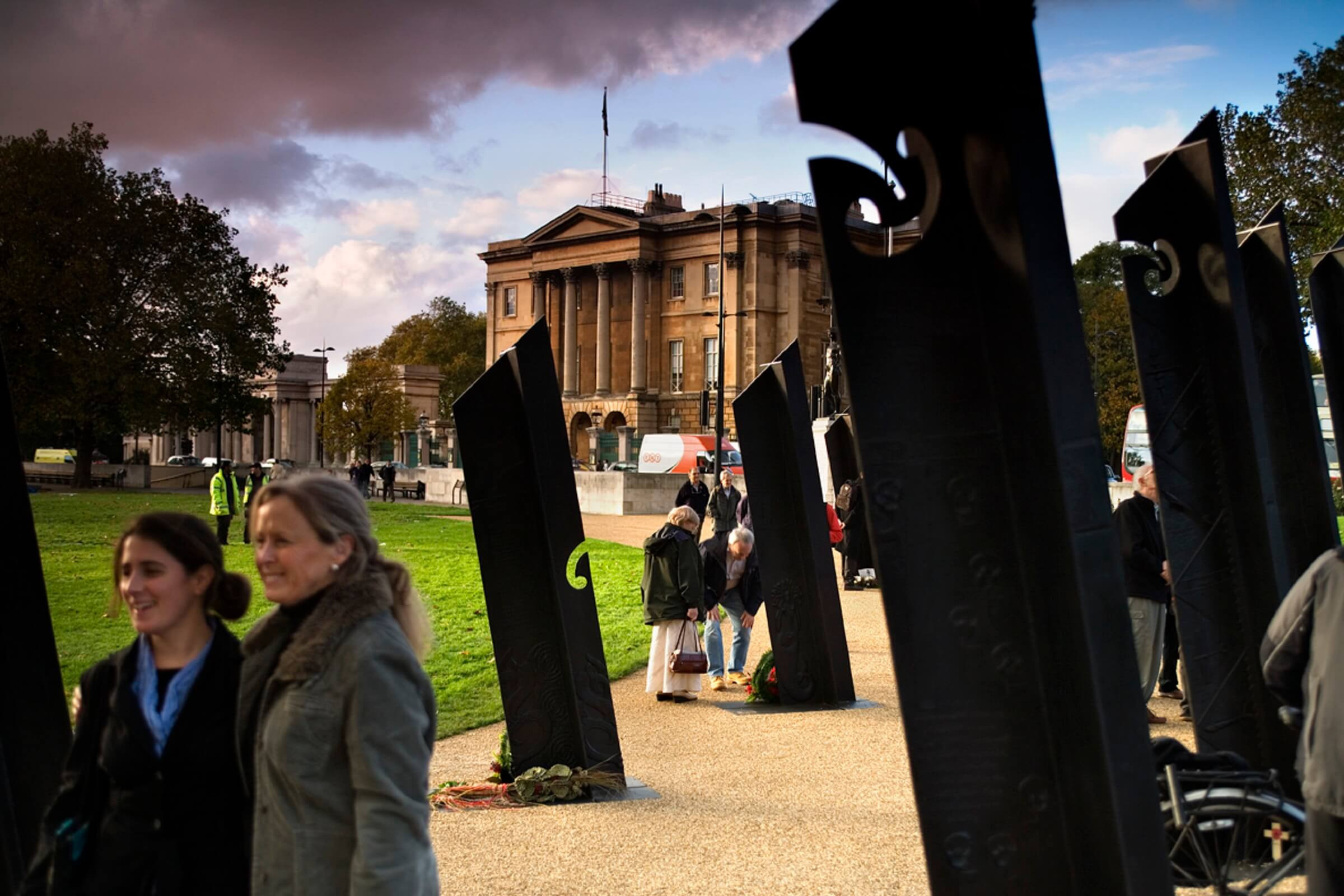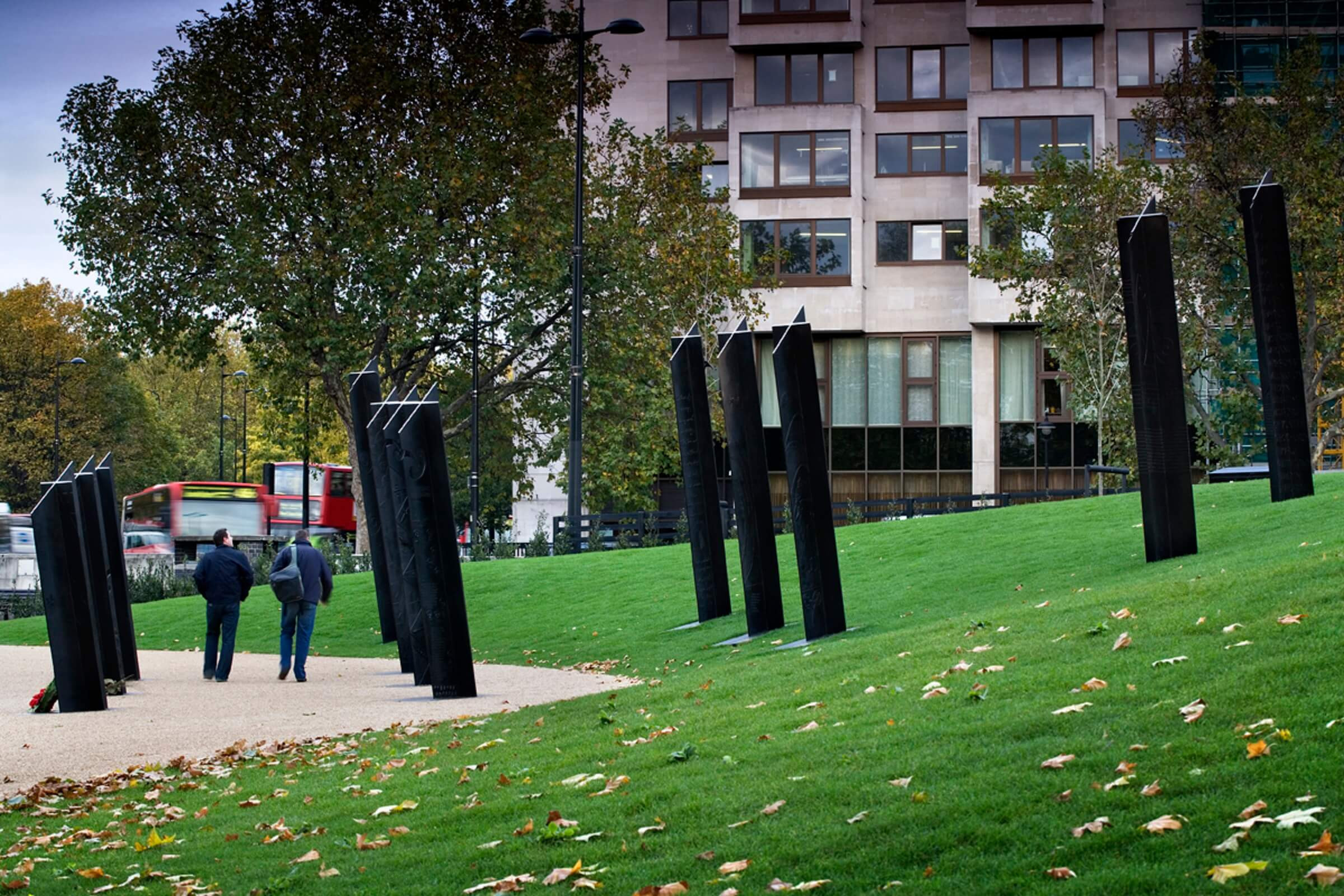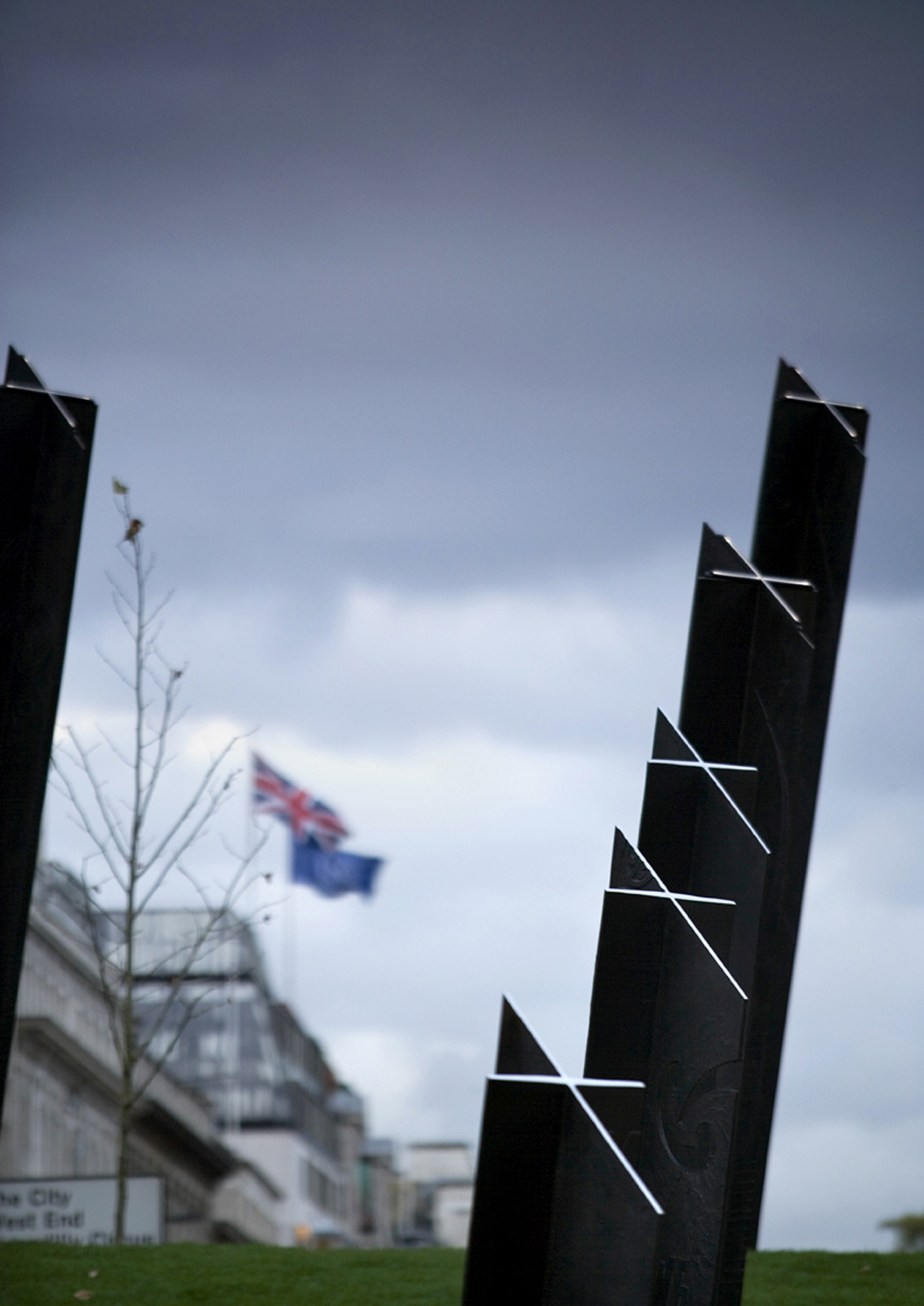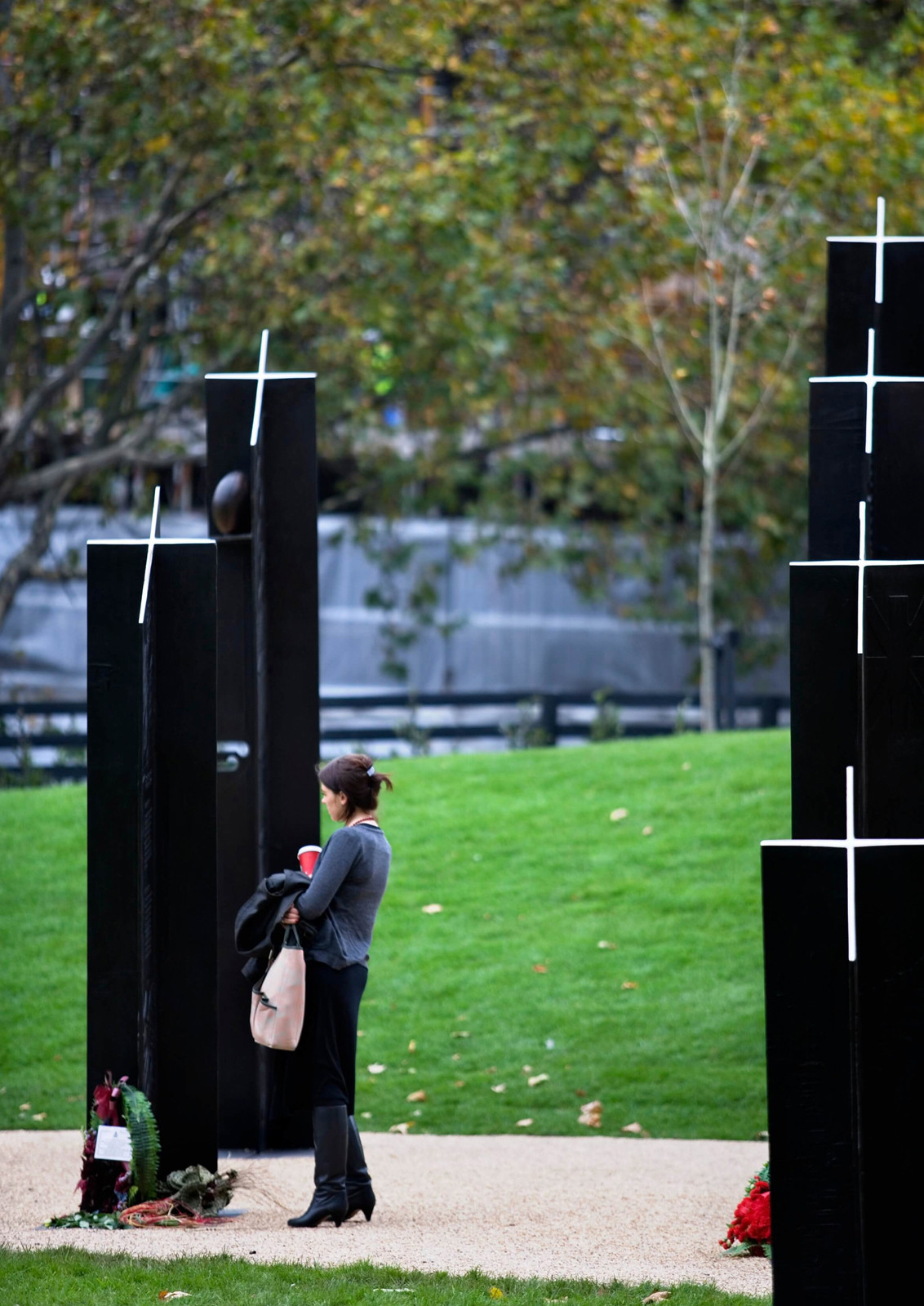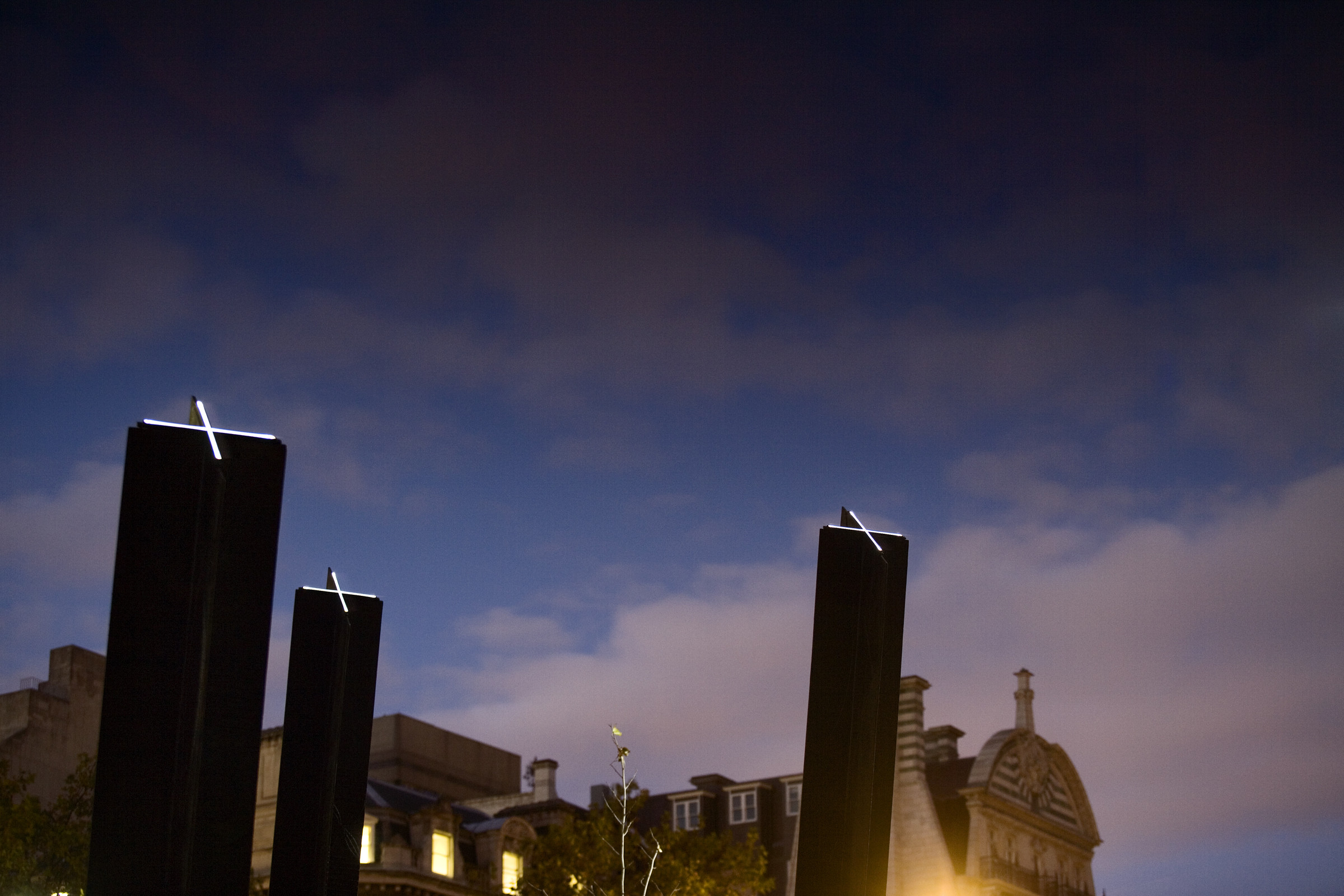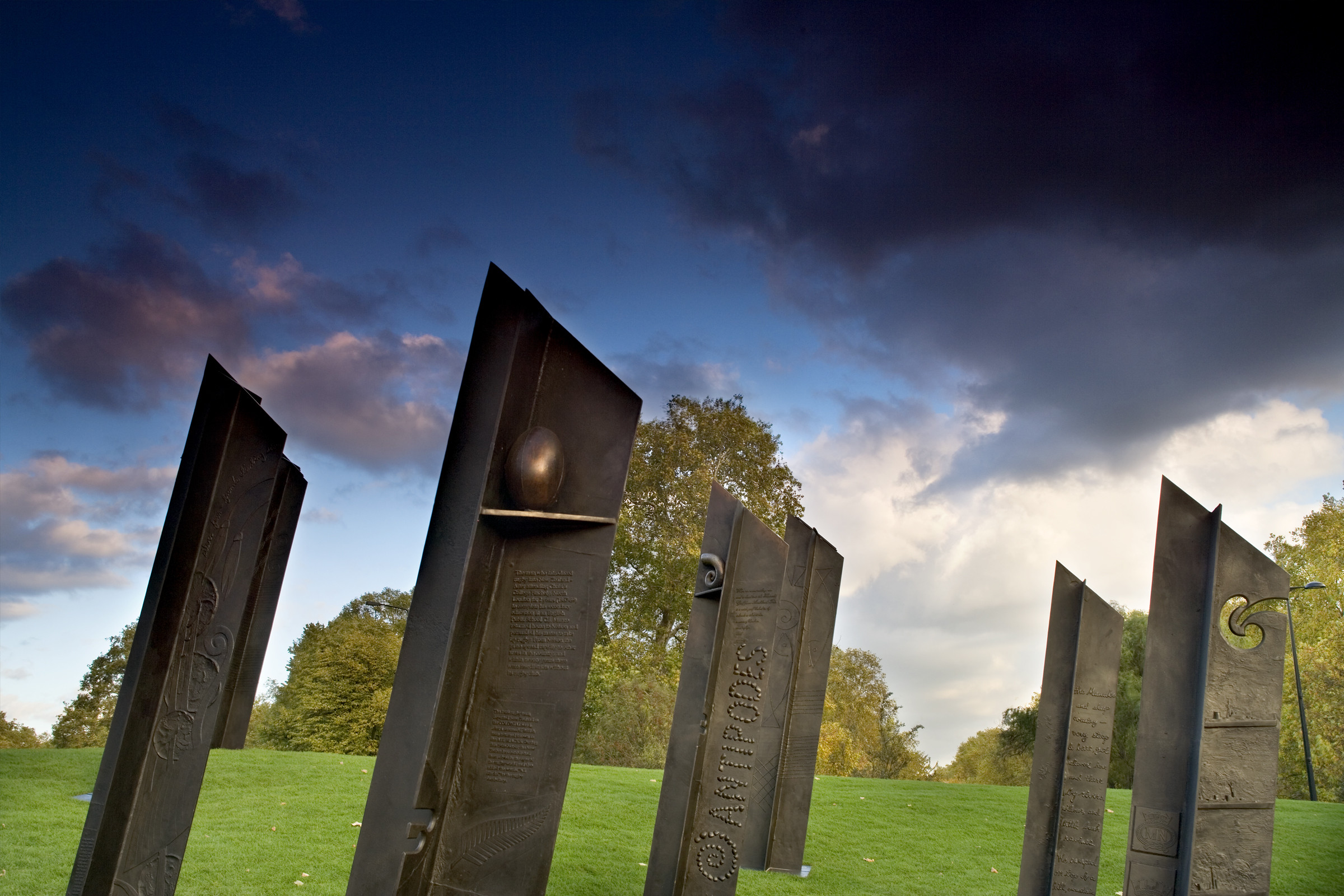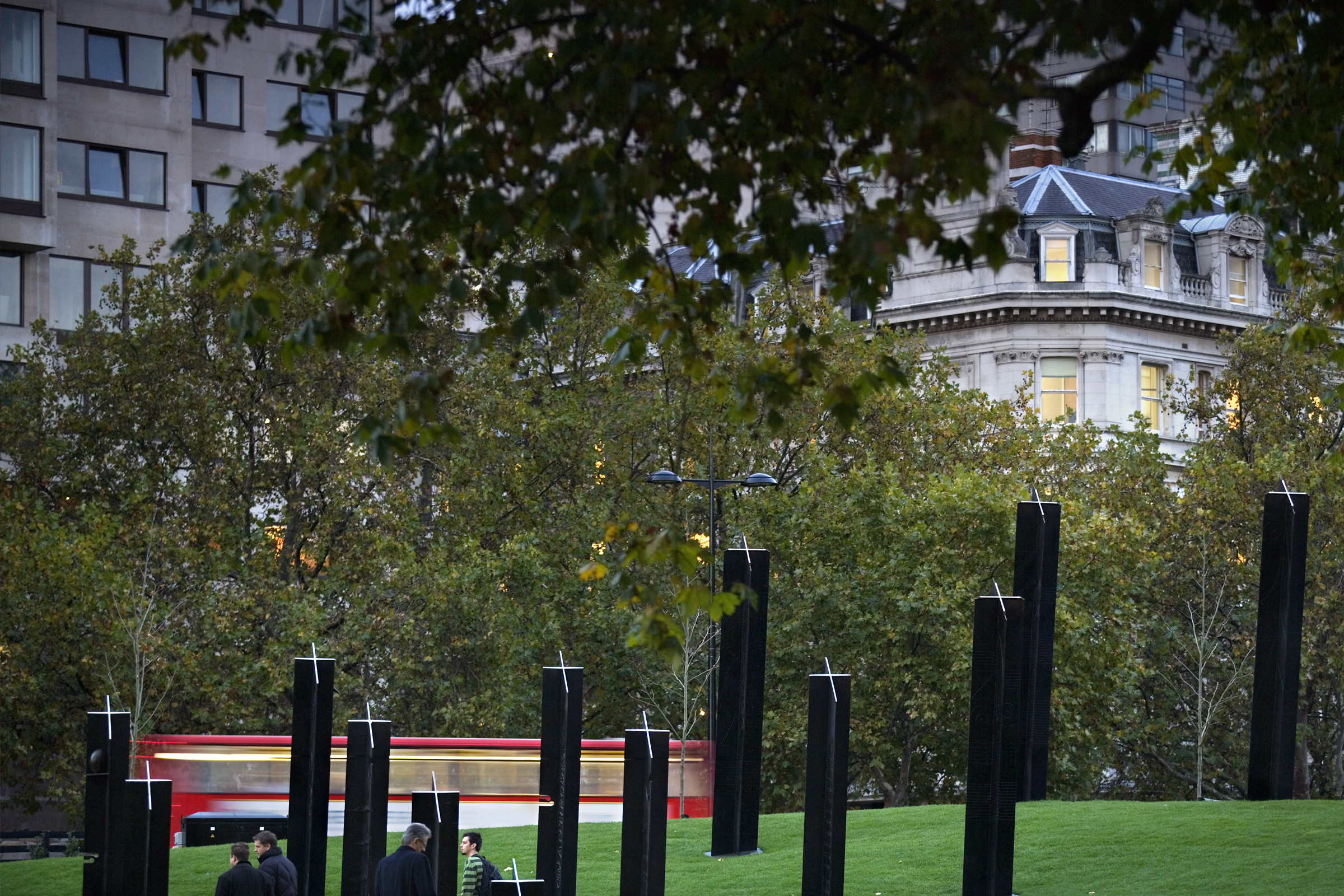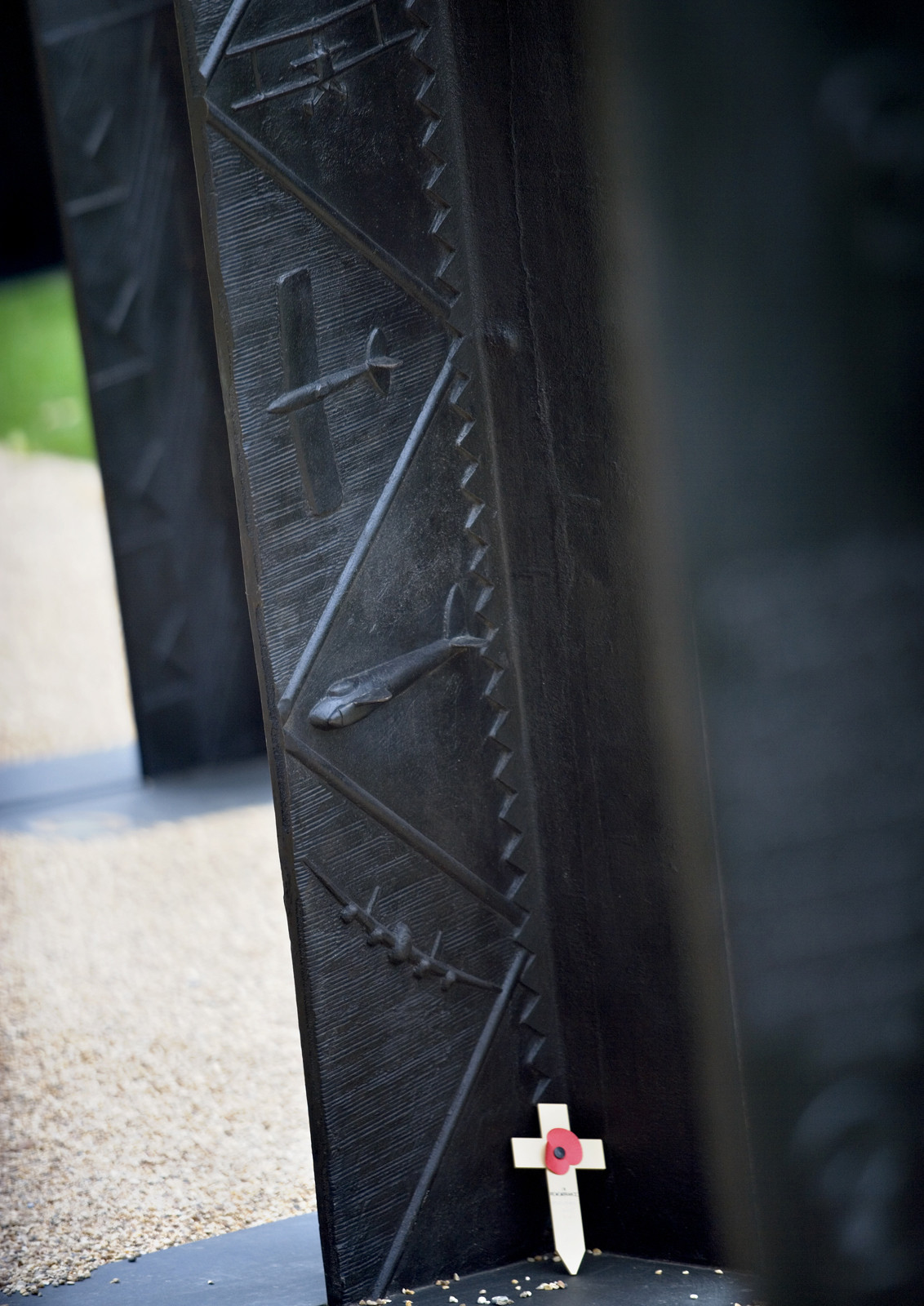2006 Southern Stand: The New Zealand Memorial
2006 Southern Stand: The New Zealand MemorialBronze
Occupies an area of 25 metres x 25 metres, tallest height 6500 mm (estimate)
2006
Single edition
Notes
The New Zealand Memorial at Hyde Park Corner, in central London, is perhaps the best known of Paul Dibble’s sculptures. Many of the concepts and themes within the memorial were developed over decades: Dibble’s love of New Zealand icons, his interest in works that communicate with people and places, commemorating events and lives; and his work involving installations — made in the late 1970s and developed into more confident assertions in the early 1980s, all became important elements that were grafted into the memorial.
The erecting of war memorials was an international movement in the early years of the 21st century carried along by an overwhelming interest by a new generation in the collective memories of war. Thousands of young people, often wearing their grandparents’ medals, attended Armistice and Anzac Day ceremonies, and new memorials began to be built worldwide. In London, memorials for each of the Commonwealth countries were erected in the central parks.
The Australian memorial was unveiled in 2003 at Hyde Park Corner and New Zealand secured the corner opposite, one of the busiest places in central London. The memorial needed to be completely different from other memorials and to reflect the concerns of New Zealand. The design steered away from portraying a wall. A wall wouldn’t reflect the young land of New Zealand which is a county of thin fences, stakes and wood.
The idea of stakes were developed, staggering down the raised bank. The use of markers to denote an important site rather than a single monolithic statue that people stand before, is the older of the two methods. It can be found in the old pre-Celtic and Celtic stone markers, remains of which are found throughout Britain, and in the pouwhenua (marking posts) used by Māori to mark ancestral boundaries or places of significance. It can also be seen in fenced farming enclosures, encompassing ideas of more contemporary and everyday use — in surveying and building and making settlements.
Ten standards are aligned in a semi-grid formation, as if soldiers in procession, creating a pattern and rhythm. The six standards at the back are placed in the shape of New Zealand’s most well-known star constellation, the Southern Cross. These six standards are different from the rest in that the sides are even in length, so the cross produced at the top edge is more of a star shape than a crucifix. Onto these cross-sections, LED lights are attached so that at night the icon of the southern sky can be recognised as a symbol of home in the London sky.
The standards are positioned as if moving down over the hill, diminishing in size as they come forward. At the back the standards are nearly five metres high and, being on a hill, they seem to tower up into the sky. At the front of the formation, the ‘leader’ is the smallest at just over a metre, roughly the height of someone kneeling. The diagonal cut of the top of the standards line up so it looks as if they have been sliced with a gigantic scythe. As the formation rolls down the hill it spills over a wide pathway that has been built to give access through the park, encouraging the intermingling of people with the memorial.
The standards are seen differently depending on the vantage point of the viewer. From far away they look as if they are plain markers, possibly large, extruded steel units, perhaps a symbolic small forest. And just as when you enter a forest and no longer notice the whole trees, when you move amongst the standards it is the details and textures that capture attention; the surface texture embellished with quotes and imagery of New Zealand and referencing its shared culture with Britain.
The opening of the memorial involved the Defence Force sending both of its 220-seat Boeing 757 jets, with a 140-strong royal tri-service guard, a band, 20 members of the cultural party, support staff and senior officers. There was the attendance of old soldiers, chosen by ballot, and a full list of Royals and Queen Elizabeth II.
